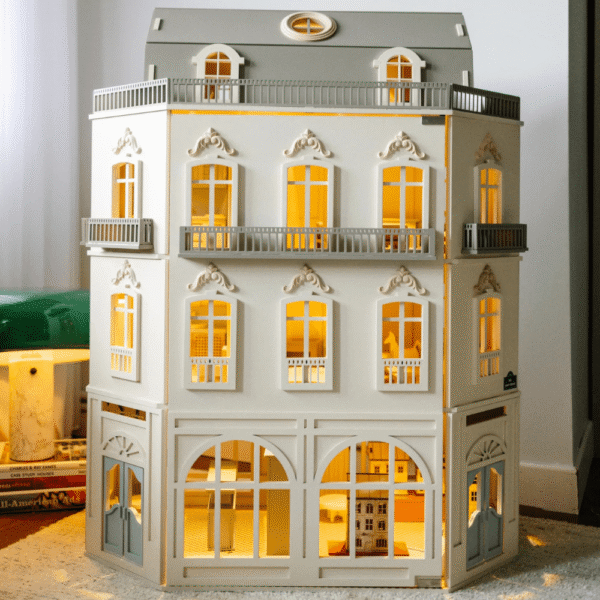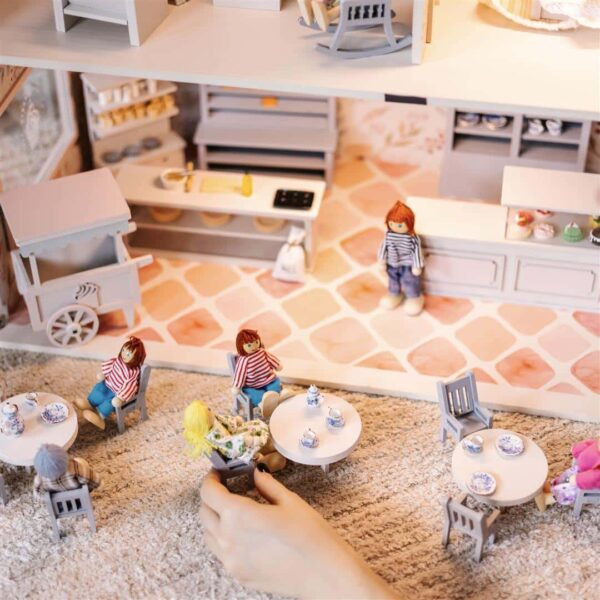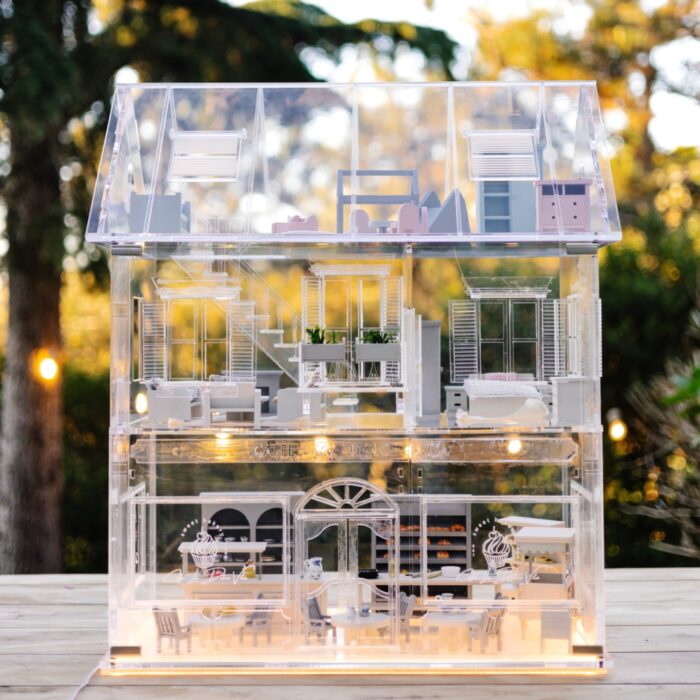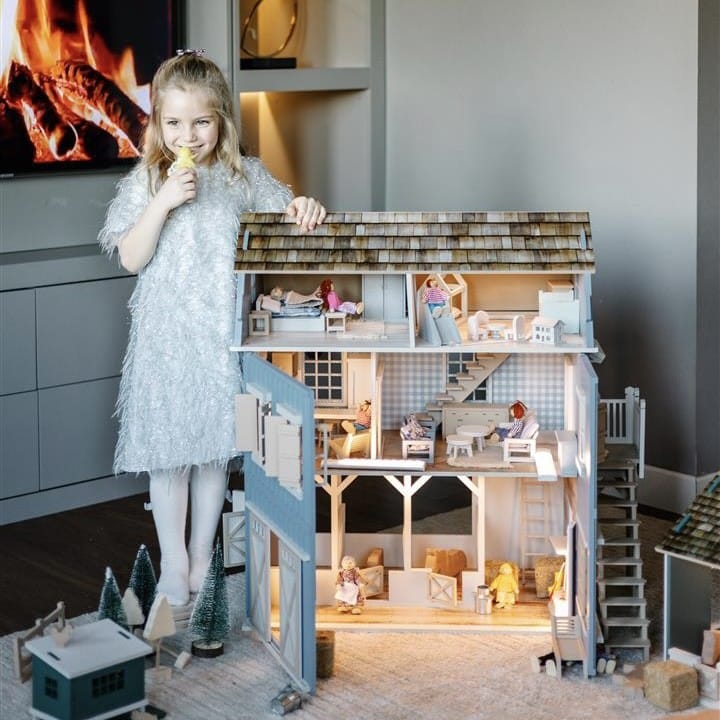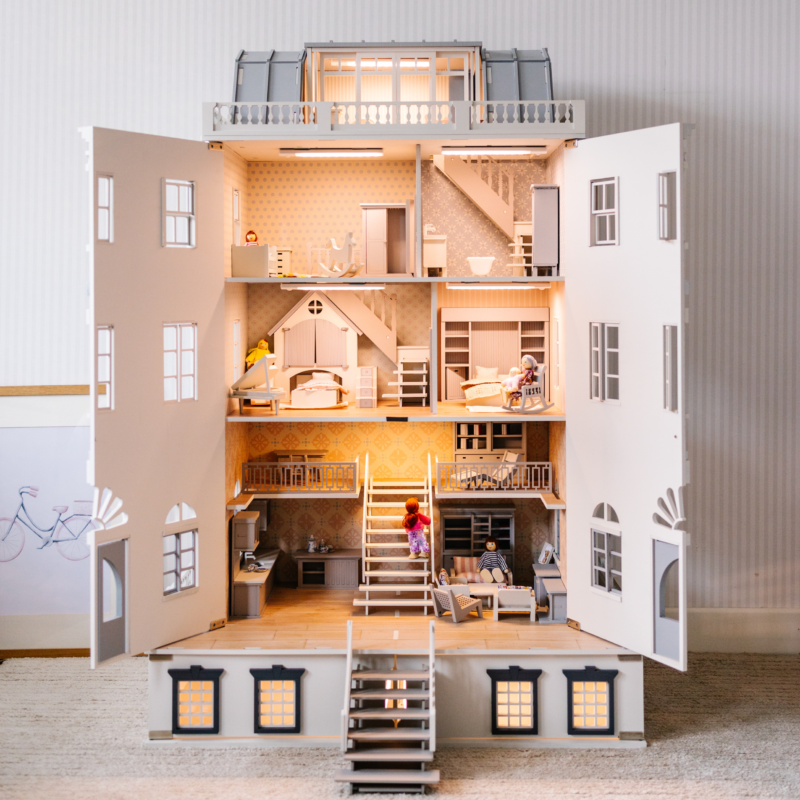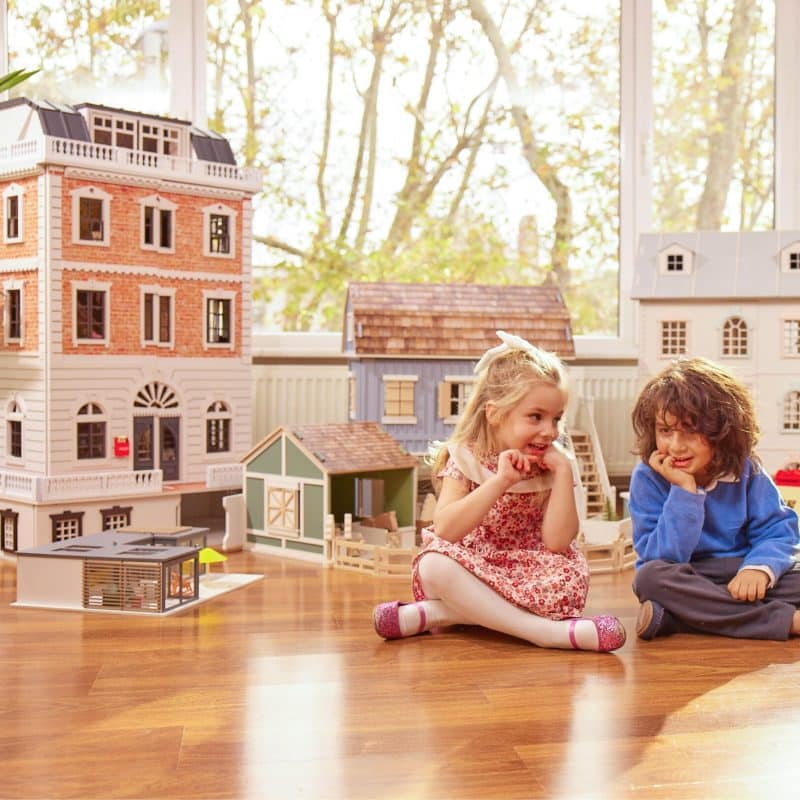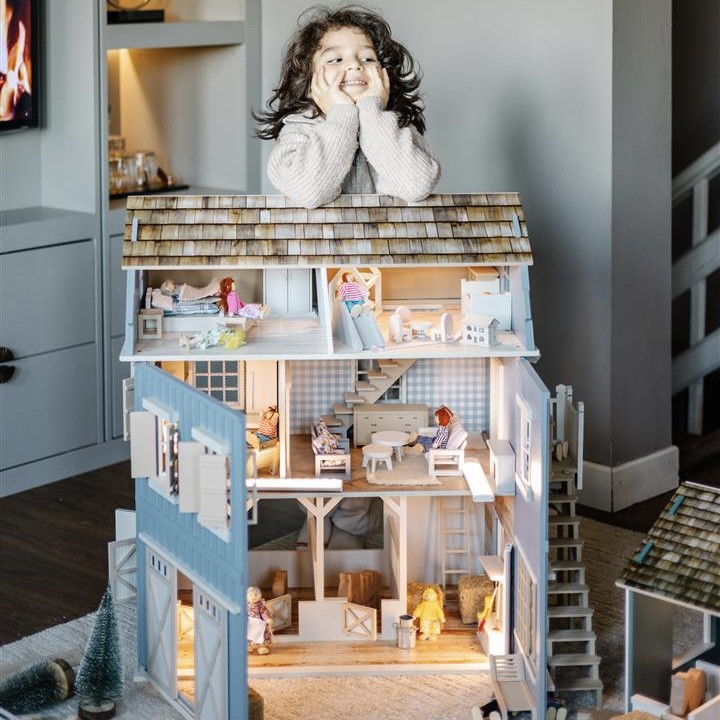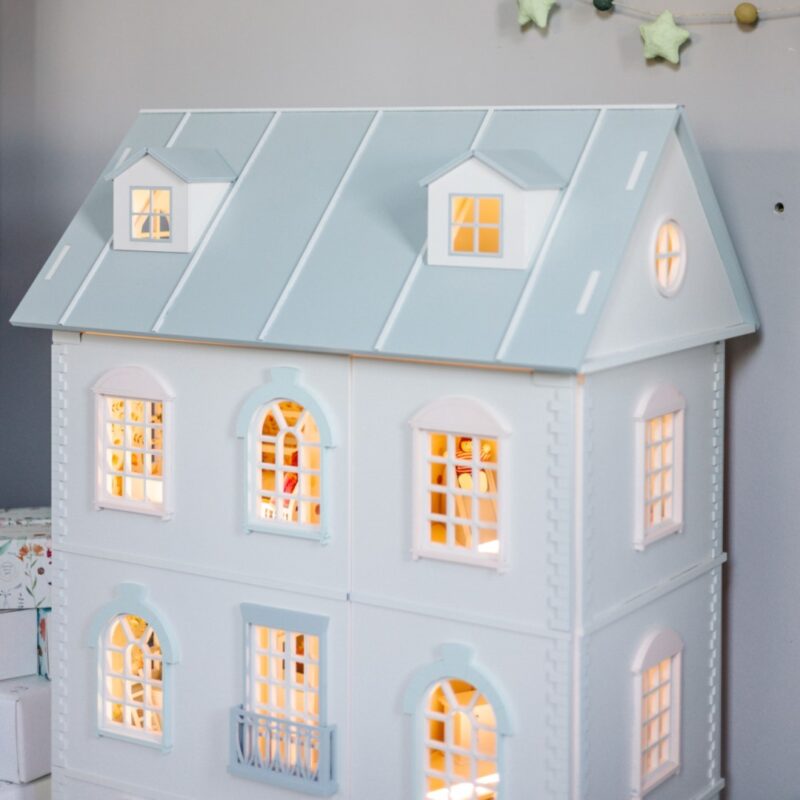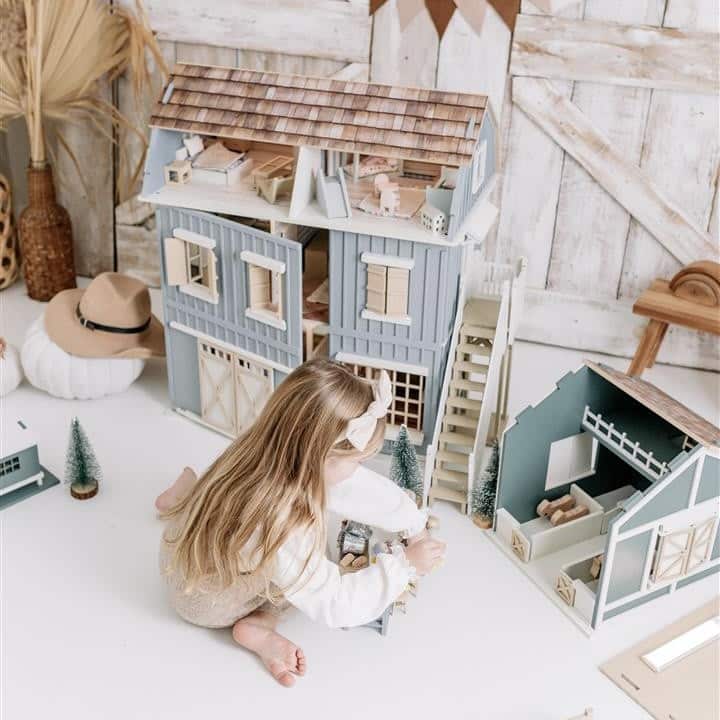How Playing with Dollhouses Boosts Children’s Imagination
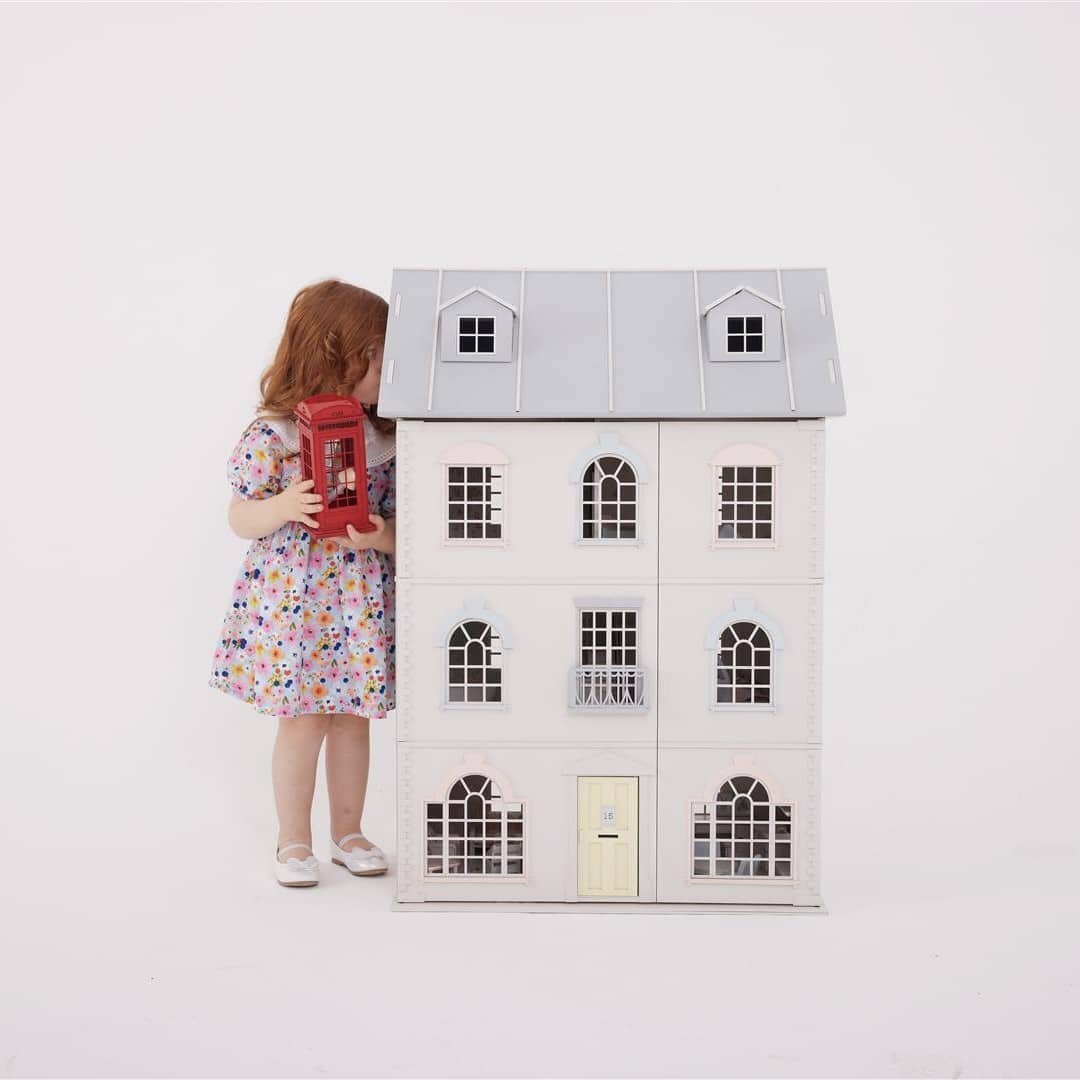
Dollhouses have been captivating children for generations, offering them a miniature world where they can unleash their imagination. The charm of a dollhouse goes beyond its tiny rooms and intricate furniture—it creates endless opportunities for imaginative play, creativity, and growth. In this blog, we explore the multiple benefits that dollhouses bring to a child’s development.
1. Storytelling and Role-Playing
One of the most significant benefits of playing with a dollhouse is the development of storytelling skills. Children assign roles to the dollhouse figures, such as parents, siblings, and pets. They create intricate plots and narrate the day-to-day lives of their miniature families, which boosts their language skills and creativity. By crafting these scenarios, children also practice self-expression and learn to articulate their emotions and thoughts.
Role-playing helps children make sense of their world. By mimicking real-life situations, they begin to understand relationships, social cues, and emotions. It’s not uncommon for children to reenact events from their own lives using their dollhouse—this helps them process these experiences in a safe, imaginative space.
2. Problem Solving and Critical Thinking
A dollhouse is not just a toy; it’s a problem-solving playground. As children arrange furniture or design rooms, they face challenges that require critical thinking. Where should the wooden coop dollhouse go? How can they fit all the furniture in the living room? These questions encourage children to make decisions, develop spatial awareness, and engage in problem-solving.
Children also learn how to adapt when their ideas don’t work as expected. For example, if a room setup doesn’t look right, they change it until it fits their vision. These experiences build resilience and adaptability—valuable life skills that go beyond playtime.
House of London
Some toys are timeless, some toys you to the past, and some bring peace to your home. The “House of London” dollhouse does all three, with its warm colours, detailed accessories, and interior sets designed to be unforgettable and a favourite toy in homes for years. This four-storey dollhouse features a living room and kitchen on the ground floor, a bathroom and bedroom on the second, and a children’s room and playroom on the third. The furnishing can be rearranged according to children’s imaginations, and the roof parts are removable. Made from first-rate wood and painted with EN71-certified child-safe paints…
3. Expanding Creativity Through Decoration
The decoration of a dollhouse provides an excellent outlet for a child’s creativity. Whether they choose a Victorian-style dollhouse, a modern apartment, or a magical fairyland, they can express themselves by choosing colors, arranging items, and crafting tiny decorations.
Children can mix and match themes, experiment with natural wooden accessories, or even create their own items from everyday household materials. This freedom to personalize their dollhouses encourages them to think outside the box and expands their creative problem-solving skills.
4. Enhancing Social Skills Through Cooperative Play
Playing with dollhouses isn’t always a solo activity. When friends or siblings join in, it becomes an opportunity to develop social skills. Children must negotiate roles, share responsibilities, and collaborate to create stories and settings. These interactions help them develop empathy, as they put themselves in the shoes of different characters within the dollhouse family.
By taking turns and working together, children learn essential social concepts like sharing and cooperation. These are skills that are crucial for positive interactions in school and beyond. The ability to effectively communicate, negotiate, and empathize will benefit them throughout their lives.
5. Emotional Growth and Understanding
Through imaginative play with a dollhouse, children can also process their emotions. They might create scenarios that mirror real-life situations, such as moving to a new home, welcoming a new sibling, or experiencing a conflict. By acting out these scenarios, children learn to navigate and understand their emotions, fostering emotional intelligence.
The dollhouse becomes a safe place where children can express themselves freely, rehearse challenging situations, and find solutions—all in a comforting and imaginative context. It helps them gain control over their emotional world, promoting confidence and resilience.
6. Learning About Household Roles and Responsibility
A dollhouse offers children a fun way to learn about household responsibilities and roles. From assigning chores to the doll family to creating a daily routine, children gain insight into how a household functions. Setting up the barn dollhouse or planning a day for the farm-themed dollhouse family teaches them the importance of order, tidiness, and caring for others.
These activities also give children a sense of responsibility. Whether they are “feeding the pets” or “putting the kids to bed,” they learn the value of taking care of others and maintaining a routine. It’s an early introduction to responsibility and the dynamics of a family, which helps build foundational life skills.
7. Building Fine Motor Skills
The small, intricate items within a dollhouse also help children develop their fine motor skills. Handling miniature furniture, arranging wooden accessories, or dressing up small figurines requires precision and coordination. These actions strengthen hand-eye coordination and dexterity, which are essential for tasks such as writing, drawing, and using tools.
By regularly engaging in these activities, children refine their motor skills in a way that feels natural and enjoyable. The practice they gain through play contributes significantly to their physical development, especially in the early years.
8. Encouraging Independent Play
Another significant benefit of dollhouses is that they encourage independent play. Children can spend hours immersed in their own little world, creating stories and setting up their dollhouse without any guidance. Independent play is crucial for building self-reliance, decision-making skills, and confidence. It allows children to follow their instincts and create scenarios without external input, which is instrumental in fostering a sense of independence and personal achievement.
Spending time alone with their dollhouse also gives children the opportunity to self-soothe and regulate their emotions. It is an important aspect of emotional maturity, as children learn to entertain themselves and enjoy solitary play, which is just as valuable as cooperative play.
Crystal Rome-Limited Edition
Welcome to a new era of dollhouses, where art meets play, and imagination comes to life. Presenting the Crystal Rome-Limited Edition, a stunning masterpiece that redefines what a dollhouse can be. A Unique Vision We envisioned a dollhouse that is more than just a toy – a piece of art that has never been seen before. Our goal was to create something intricate and challenging, yet captivating and enjoyable for everyone. Crystal Rome-Limited Edition is the result of this vision, merging complexity with delight. Intriguing Contrasts This one of a kind dollhouse is designed with fascinating contrasts. Its exterior is…
Conclusion
Dollhouses are much more than just toys—they are gateways to endless creativity, learning, and growth. They provide a magical world where children can express themselves, tackle challenges, and interact socially in a safe and nurturing environment. The benefits of dollhouse play extend far beyond the miniature walls of the toy, fostering creativity, emotional intelligence, social skills, and even fine motor abilities.
Discover our enchanting collection of dollhouses at Little Forest Animals, and let your child’s imagination thrive!
FAQ
Q: At what age can children start playing with dollhouses? A: Children as young as 3 years old can start enjoying dollhouses. The activities can be tailored to different age groups, making them suitable for a wide range of developmental stages.
Q: How do dollhouses benefit my child’s development? A: Dollhouses help develop creativity, problem-solving skills, social interactions, and emotional intelligence by allowing children to create stories, solve challenges, and engage in role-playing.
Q: Are there different styles of dollhouses available? A: Yes, we offer a variety of styles including modern city apartments, Victorian-style dollhouses, and even themed fairyland dollhouses to suit every child’s imagination.
Q: Can playing with dollhouses be a group activity? A: Absolutely! Dollhouses are great for social play, encouraging children to share, negotiate, and collaborate with friends, helping to improve their social skills.

